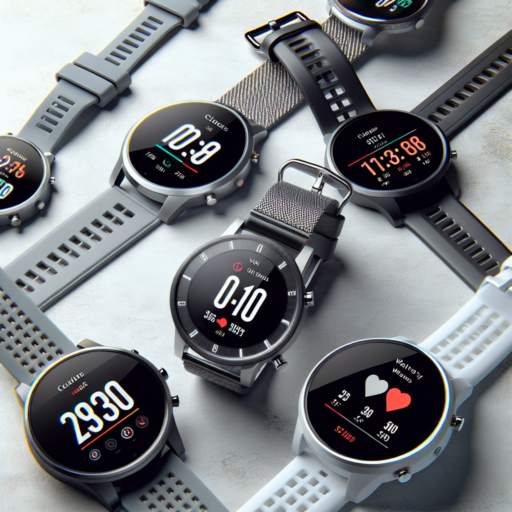Are smart watches accurate for calories burned?
When it comes to tracking fitness, smart watches have become an indispensable tool for many people. Tracking calories burned is one of the features that users rely on heavily. However, the accuracy of these devices often comes into question. It’s worth considering various factors, such as the technology behind these gadgets and how they estimate calorie expenditure, to understand their reliability.
Most smart watches use a combination of sensors and algorithms to calculate calories burnt. These include accelerometers, heart rate monitors, and sometimes even GPS data. While these technologies provide a good foundation for estimating calorie burn, individual variations in metabolism and fitness level can make it difficult for these devices to offer precision in their readings. The algorithms behind these calculations typically incorporate basic information like age, weight, height, and gender, but they might not account for all individual differences, leading to potential inaccuracies.
Studies comparing the calorie expenditure reported by smart watches against the gold standard methods, such as indirect calorimetry, show a variation in accuracy. Some brands and models may offer fairly reliable estimations in laboratory settings, yet their performance can differ significantly in the real world.
What is the best smart watch for accurate calories?
Finding the best smart watch for accurate calorie tracking involves looking at several top contenders in the market. Accuracy in calorie counting is pivotal for individuals focused on fitness, weight management, or simply monitoring their daily activity levels. These smart watches utilize advanced sensors and algorithms to provide users with data that is as precise as possible.
Key Features for Accuracy
When searching for a smart watch that excels in calorie tracking, it is essential to consider devices that offer heart rate monitoring, GPS tracking, and the ability to customize based on personal metrics like age, weight, and height. Watches that integrate these features tend to deliver more accurate calorie burn figures by analyzing the intensity and duration of your activities in conjunction with personal body metrics.
Moreover, smart watches that offer integration with third-party fitness apps broaden the scope of accuracy. This connectivity allows for a richer set of data to be analyzed, fine-tuning the calorie count with additional information from various types of workouts and exercises. The ability to sync and consolidate data from multiple sources ensures that the calorie count reflects a comprehensive view of the user’s physical activity.
Considerations for Selection
Selecting the best smart watch for accurate calorie counting also involves personal preferences and lifestyle needs. Whether it’s a sleek design for all-day wear, water resistance for swimmers, or extended battery life for endurance athletes, the optimal choice varies by user. Additionally, the watch’s software compatibility with iOS or Android devices can significantly influence the user experience and the precision of health tracking apps.
How many calories do 10,000 steps burn?
The question of how many calories 10,000 steps burn is a commonly asked one, especially with the popularity of fitness trackers motivating us to hit that magic number daily. The answer, however, isn’t as straightforward as one might hope. The amount of calories burned by walking 10,000 steps is influenced by several factors including an individual’s weight, walking pace, and general fitness level.
On average, it’s estimated that walking 10,000 steps can burn anywhere from 250 to 500 calories. This variance is due to how different bodies consume energy. For instance, a person weighing around 160 pounds might burn approximately 400 calories by walking 10,000 steps at a moderate pace. In contrast, someone weighing 200 pounds might burn closer to 500 calories for the same activity, given the additional energy required to move a larger body mass.
Moreover, the terrain where you walk can also significantly affect the number of calories burned. Walking uphill or on uneven surfaces, for instance, will generally burn more calories than walking on a flat surface because of the extra effort required. In addition, the pace at which you walk is crucial; a brisk walk will consume more calories compared to a leisurely stroll. Integrating intervals of increased pace, or including fitness walking techniques, can further enhance the calorie burn from your daily step count.
No se han encontrado productos.
Does Fitbit overestimate calories burned?
Many users question the accuracy of their Fitbits, particularly regarding the calculation of calories burned. A Fitbit aims to offer a detailed insight into our daily physical activities and overall health. However, when it comes to measuring calories expended, several factors can influence the data, leading to overestimation in certain scenarios. Understanding the variables that contribute to this can help users better interpret the data provided by their devices.
The way a Fitbit calculates calories burned is based on a combination of personal data—including age, weight, height, and sex—and physical activity metrics. While the personal data remains static, physical activity can vary greatly from day to day. Heart rate, one of the primary indicators used by Fitbit devices to estimate calorie burn, can be affected by more than just exercise, including stress or dehydration, potentially skewing the calories burned figure.
Moreover, the efficacy of a Fitbit’s sensors and algorithms in capturing and interpreting movements can sometimes lead to overestimations. Activities like weight lifting, biking on rough terrain, or doing yoga might not be as accurately tracked as walking or running due to the complexity of the movements and the fitness band’s positioning on the wrist. This discrepancy raises the question of whether Fitbit devices might sometimes provide a higher count of calories burned than actually expended.




